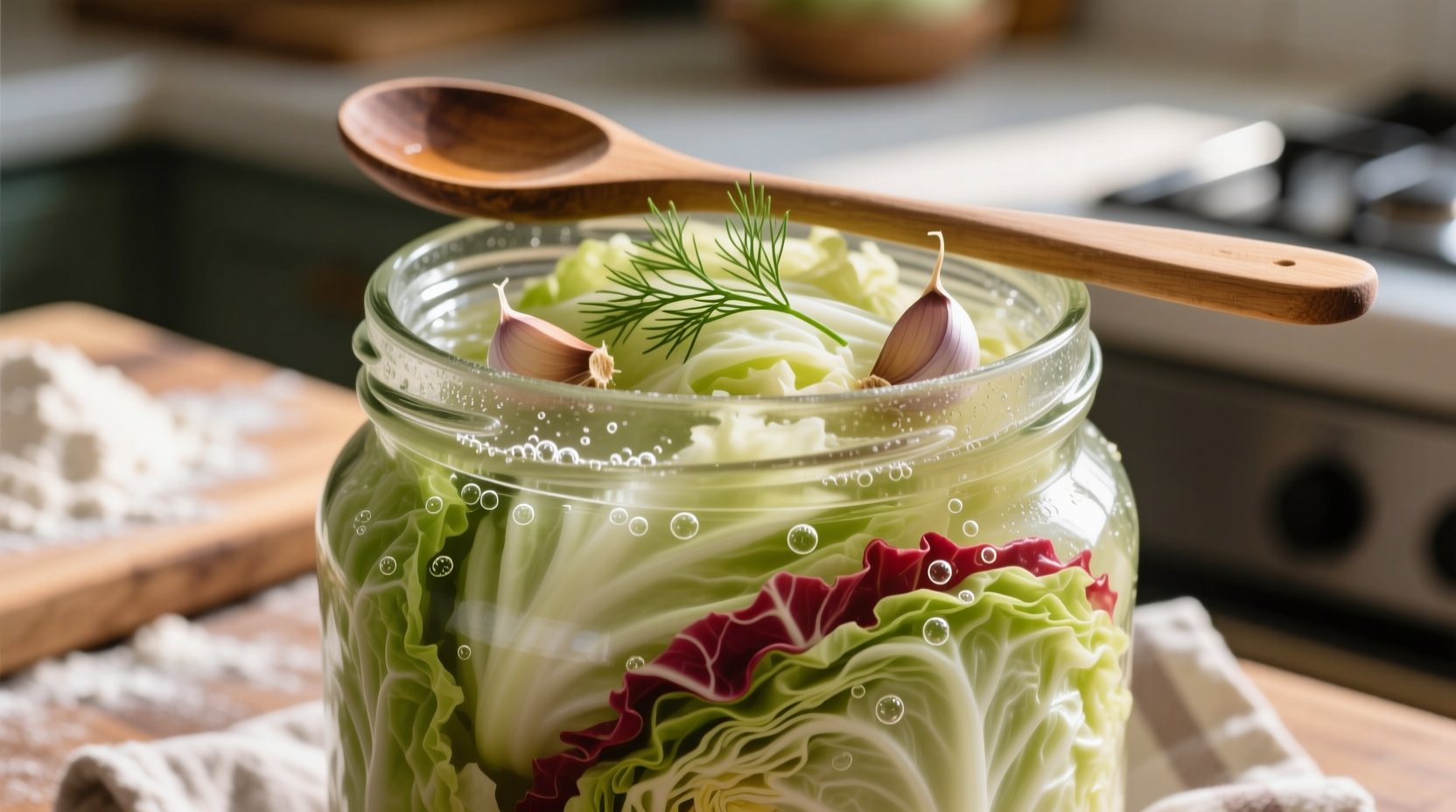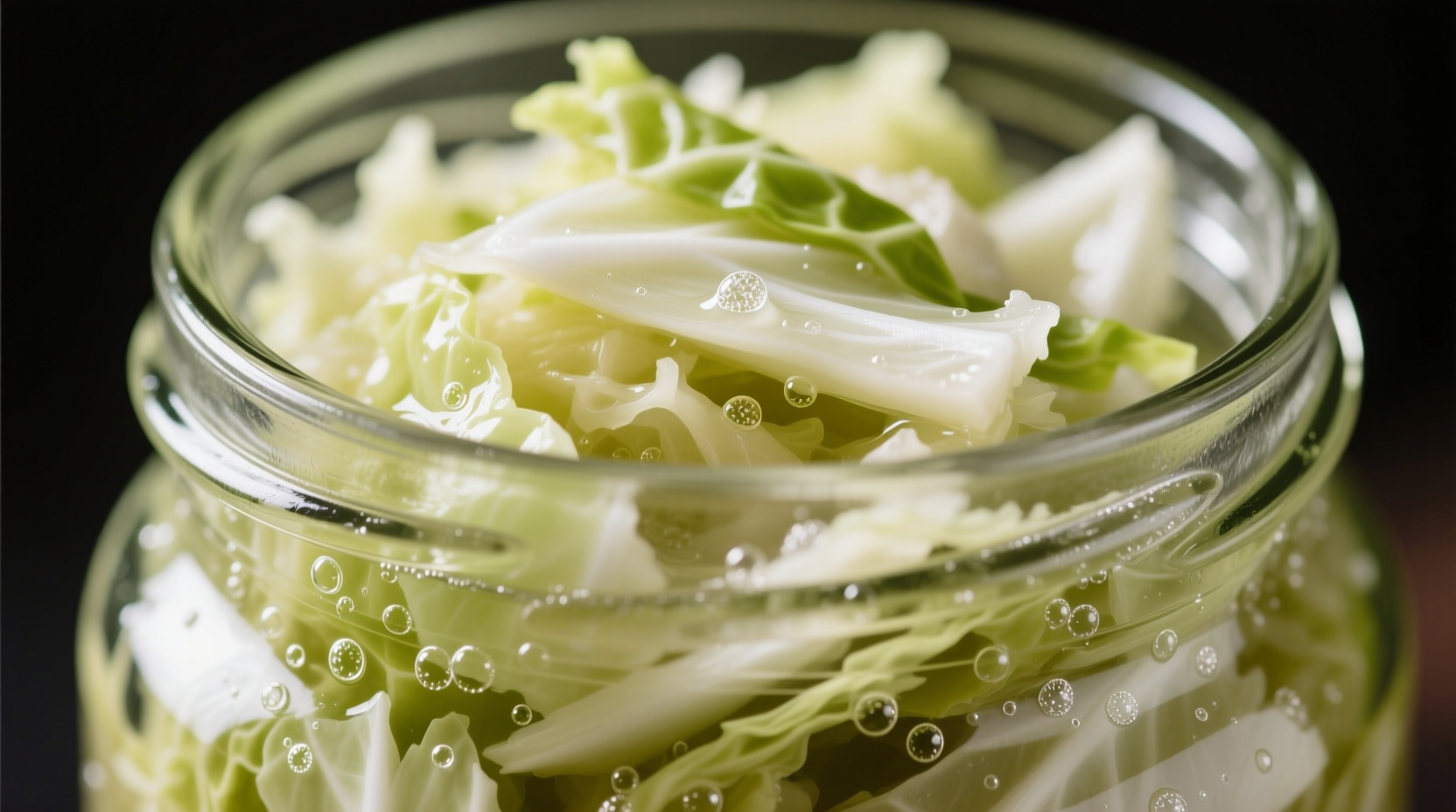Ever wondered what does sauerkraut taste like before trying it? This traditional fermented cabbage dish surprises many first-time tasters with its nuanced flavor profile that goes far beyond simple sourness. Understanding sauerkraut's taste characteristics helps you appreciate its culinary versatility and decide how to incorporate it into your meals.
The Core Flavor Profile: More Than Just Sour
When you take your first bite of properly fermented sauerkraut, you'll experience a symphony of flavors that evolves in your mouth. The initial sensation is a clean, refreshing tartness from lactic acid produced during fermentation—similar to yogurt but with vegetable complexity. This sourness isn't harsh or vinegar-like but rather rounded and complex.
Beneath the tanginess lies subtle sweetness from the natural sugars in cabbage that haven't fully converted during fermentation. The salt level provides necessary preservation while enhancing other flavors, typically ranging from 1.5-3% salinity in traditional recipes. Unlike pickled foods with vinegar, sauerkraut's acidity develops gradually through natural bacterial action, creating a more integrated flavor experience.

How Fermentation Transforms Taste: A Flavor Timeline
The taste of sauerkraut evolves dramatically throughout the fermentation process. Understanding this timeline helps explain why different sauerkraut varieties taste distinct:
| Fermentation Stage | Flavor Characteristics | Texture |
|---|---|---|
| 3-5 days | Mildly tangy, fresh cabbage notes dominant | Crisp, firm |
| 2-3 weeks | Noticeable sourness, developing complexity | Firm but yielding |
| 6-8 weeks | Rich umami, balanced sour-sweet profile | Softer, more tender |
| 3+ months | Deep, complex flavors, mellow acidity | Very tender, almost melting |
According to research published in the Journal of Food Science, lactic acid bacteria convert cabbage sugars into lactic acid over time while producing various flavor compounds that create sauerkraut's distinctive taste profile. The longer fermentation continues (within proper parameters), the more complex and rounded the flavors become.
Raw vs. Cooked: How Preparation Changes Flavor
Whether you enjoy sauerkraut raw or cooked dramatically affects its taste experience:
- Raw sauerkraut delivers the brightest acidity with crisp texture and pronounced probiotic tang—ideal for salads and sandwiches where you want a flavor punch
- Cooked sauerkraut develops deeper, mellower flavors as heat transforms the acids and concentrates savory notes—perfect for traditional dishes like choucroute garnie
- Heat-treated commercial varieties often lose some complexity but gain shelf stability, with flavors leaning more toward simple sourness
The USDA's fermentation guidelines note that heating sauerkraut above 115°F (46°C) stops the fermentation process and alters the microbial profile, which directly impacts flavor development and nutritional properties.
Store-Bought vs. Homemade Taste Differences
Not all sauerkraut tastes the same. Understanding these key differences helps set proper expectations:
- Commercial refrigerated (raw): Bright, clean sourness with noticeable crunch; contains live cultures
- Shelf-stable canned: Milder, sometimes slightly metallic notes from canning; cooked texture
- Homemade traditional: Complex flavor layers with varying sourness depending on fermentation time
- Flavored varieties: Caraway, juniper, or apple additions create distinctive regional profiles
When evaluating what sauerkraut tastes like in different preparations, consider that authentic German-style sauerkraut typically ferments for 6-8 weeks, developing deeper flavors than many mass-produced versions that may use vinegar shortcuts instead of proper fermentation.
Regional Taste Variations You Should Know
Sauerkraut isn't one-note across cultures. Regional preparations create distinctive flavor experiences:
- German sauerkraut: Often includes caraway seeds and white wine, creating earthy, complex notes
- Alsatian (French) style: Typically sweeter with Riesling wine additions and juniper berries
- Polish & Eastern European: Frequently includes apples for natural sweetness balancing the sourness
- American commercial: Often milder with added sugar to appeal to broader palates
These regional differences explain why someone might dislike one style but love another—understanding how different sauerkraut tastes based on preparation method helps you find varieties that match your palate preferences.
Common Taste Misconceptions Debunked
Several myths persist about sauerkraut's flavor that deserve clarification:
- "It's just sour" - While sourness is prominent, properly made sauerkraut has layered flavors including subtle sweetness and umami depth
- "All sauerkraut tastes like vinegar" - Traditional fermentation creates lactic acid, which has a different, more rounded sourness than vinegar's acetic acid
- "It tastes like spoiled cabbage" - The controlled fermentation process creates entirely new flavor compounds, not decomposition
- "The smell indicates bad taste" - The pungent aroma of fermentation doesn't translate to overpowering flavor in the mouth
How to Enjoy Sauerkraut Based on Its Flavor Profile
Understanding what sauerkraut tastes like helps you pair it effectively:
- Balance strong flavors: Pair tangy sauerkraut with rich meats like pork or duck to cut through fat
- Enhance sandwiches: Use raw sauerkraut on Reubens for bright acidity that complements corned beef
- Modify intensity: Rinse store-bought sauerkraut to reduce saltiness or simmer with apples to mellow sourness
- Create contrast: Serve chilled sauerkraut salad alongside hearty winter stews for refreshing balance
Professional chefs often describe sauerkraut as a "flavor amplifier" that enhances surrounding ingredients rather than dominating a dish. When wondering what does sauerkraut taste like in recipes, remember it functions similarly to citrus zest—adding brightness without overwhelming other components.
Developing Your Palate for Fermented Foods
If sauerkraut's flavor initially seems challenging, these techniques can help you appreciate its complexity:
- Start with small amounts mixed into familiar dishes like potato salad
- Try sweeter varieties with apple or beet additions first
- Sample different fermentation durations to find your preferred sourness level
- Pair with complementary flavors like caraway, juniper, or dill that enhance sauerkraut's natural profile
Food scientists note that repeated exposure to fermented foods actually changes taste receptor sensitivity, making initially challenging flavors more appealing over time—a phenomenon known as "acquired taste" that applies perfectly to understanding what sauerkraut really tastes like.











 浙公网安备
33010002000092号
浙公网安备
33010002000092号 浙B2-20120091-4
浙B2-20120091-4